The Founding of Boston
Image: Ships in Boston Harbor
A fleet of 11 ships carrying the residents of the Massachusetts Bay Colony landed at Salem and Charlestown in 1630. John Winthrop, aboard the Arabella, landed at North River near Salem on June 12, 1630. Salem was short of food and not able to support another thousand inhabitants.
Winthrop decided to locate the colony at Charlestown because of its proximity to the harbor, but the colony did not flourish there, partly due to the lack of good drinking water. Across the Charles River, William Blackstone, a former clergyman, was living an isolated existence as a trapper. Word came to him from his Indian friends of the difficulties his fellow countrymen were having.
He sent a message to John Winthrop advising him that the Trimountain hills on his side of the river were far more suitable for settlement. Winthrop, who had been at college with Blackstone, went to see him, and it was this meeting that really marked the foundation of the city of Boston.
The peninsula that became known as Boston was originally named Shawmut (Living Waters) by the Algonquian Indians. It was named Boston on September 7, 1630. Many of the original settlers came from Boston, England.
The first colonists at Boston settled primarily between Hanover, Tremont, Bromfield, and Milk Streets, as they are known today. Pemberton Hill was also a favorite place of residence. The first buildings were rude and unsightly. They were of wood with roofs thatched, while the chimneys were built of pieces of wood placed crosswise and covered with clay.
Economy in building was carried so far that Governor John Winthrop scolded his deputy in 1632 for nailing clapboards upon his house saying “that he did not well to bestow so much cost about the wainscoting amid adorning his house in the beginning of a plantation both in regard of the public charges and for example.”
First Woman On Boston Soil
Anne Pollard arrived at Massachusetts Bay Colony with the Winthrop fleet in June 1630. She would have been about ten years old at the time, a healthy young girl in a circle of sedate magistrates and matrons. The group settled first at Charlestown, but later crossed the Charles River in search of good drinking water.
The boat was made ready, and Anne clambered aboard to get a seat in the bow. As the prow touched ground, Anne stood up and leaped ashore. While some of the men crossed over to view the spring, she ran in and out of the blueberry bushes that skirted the swampy lands along the present Charles Street.
A few years later Anne married William Pollard, an innkeeper, and they lived “on a parcel of land scituate near the bottom of the Common at the Westerly part thereof in Boston aforesaid and bounded on the Sea southwest.” The drinking water must have been excellent there, because Anne lived to the ripe old age of 105.
A City Upon a Hill
Among the outstanding features of the new settlement were its hills. Copp’s Hill, known first as Windmill Hill and later as Snow Hill, rose precipitously from the water on the northeast to a height of 50 feet.
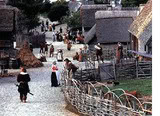
Image: Streets of Boston Town
The fort that the Puritans built in 1632 furnished the name for Fort Hill which had previously been designated as Corn Hill, being one of the early planting grounds of the colonists. This hill rose to a height of 80 feet above the level of the sea, and was one of the most prominent features of the town.
Perhaps most important of all, Trimountain, which still appears on the city seal today, were the “three little hills” that extended through the center of the peninsula from Hanover Street to the Charles River.
Cotton Hill on the east, later changed to Pemberton, was credited with a height of eighty feet. Beacon Hill, in the vicinity of Temple and Bowdoin Streets, rose 138 feet above the sea. And West Hill, in the vicinity of Pinckney Street, and was sometimes called Copley’s Hill.
Gateway to New Settlements
Through the portal of Boston at one time or another passed all, or nearly all, those who were to found additional colonies in New England. Men and women journeyed north, south, and west, searching for favorable locations, buying land of the Indians—hopefully—and laying the groundwork for permanent communities.
In this way were begun the colonies of Rhode Island, Connecticut, New Haven, and New Hampshire, each of which sprang in part from the desire for separate religious and political life. Sometimes individuals wandered alone or in small groups, but more frequently companies of men and women of like minds traveled across the land or voyaged by water along the coast and up the rivers in search of new homes.
SOURCES
A Tale of Two Bostons
New Colonies from Old
History of Boston’s Street System

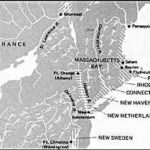

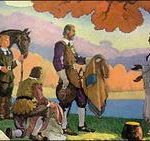
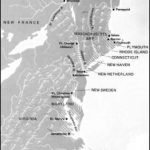

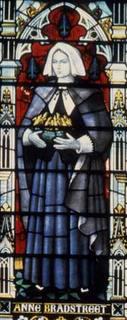
It is always spellbinding to study the people who were our forebearers.I love reading all I can find about Anne Pollard.She is my y ancestress thru my maternal grandfather.I. have yet to find her maiden name.She lived in Saffron Walden, England came to America a a young age and married my Ancestor William Pollard.That is all I can find about her.I would love to write a novel about this woman.
Hi, Sandra,
I don’t know if you’ve already found Anne’s maiden name, but if you haven’t, it’s Dison or Dyson. Do you happen to know when William came over to America?